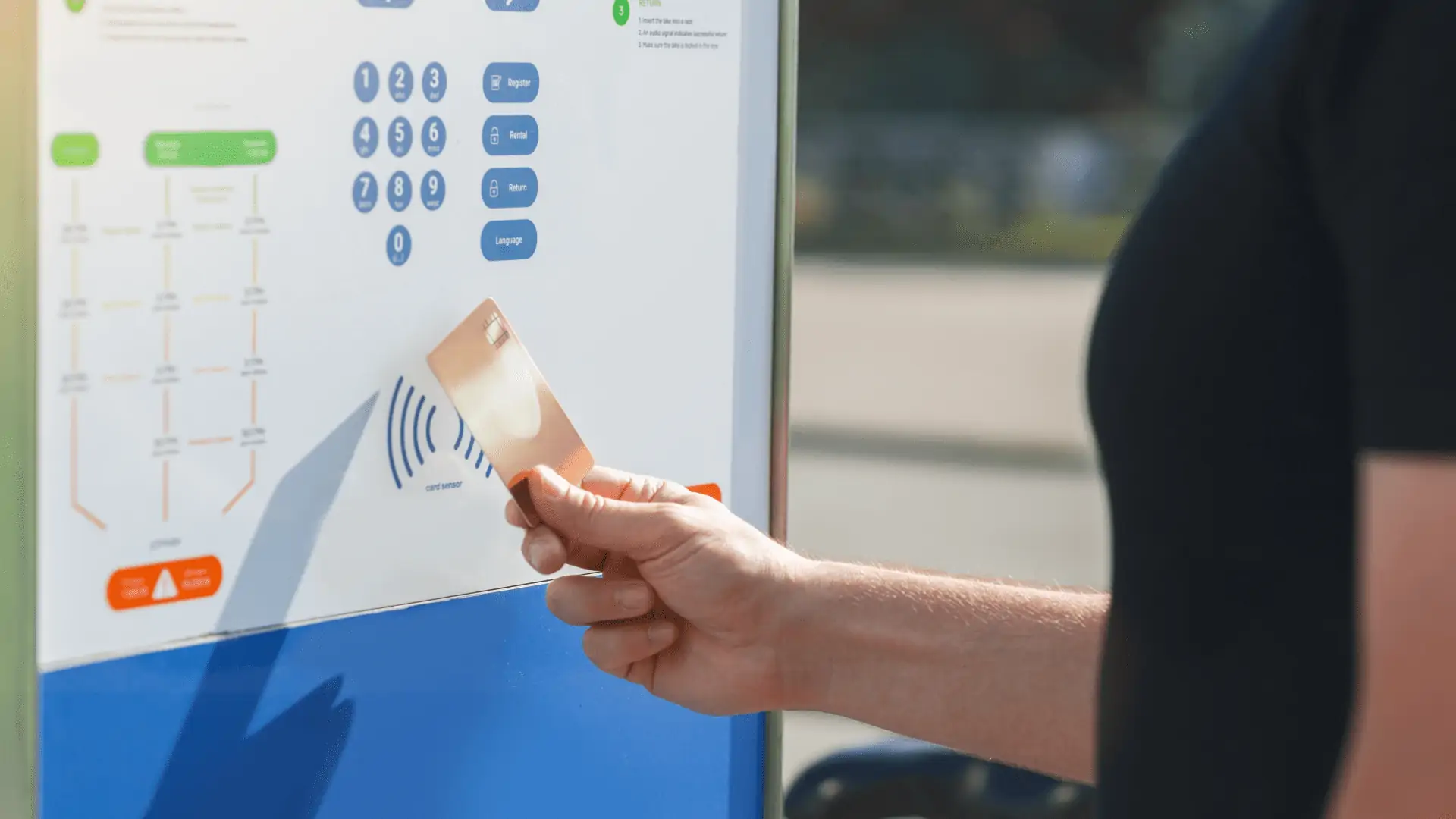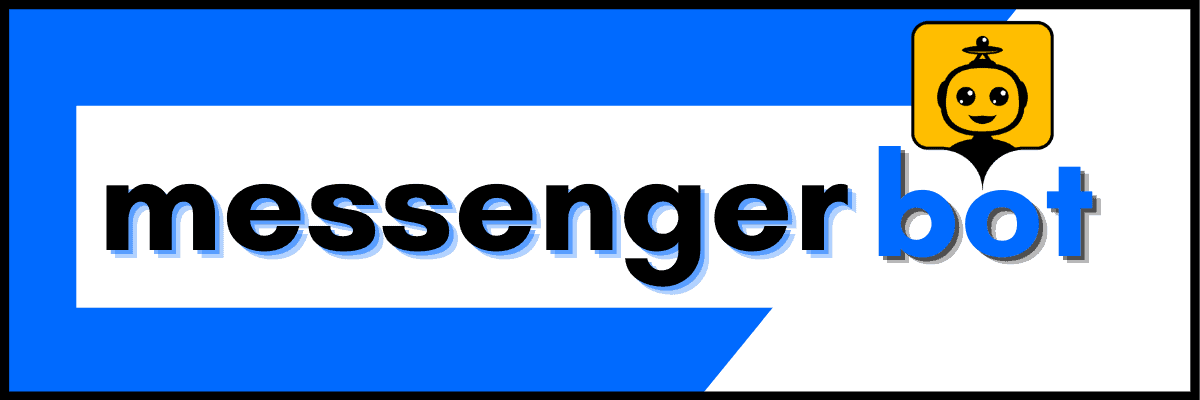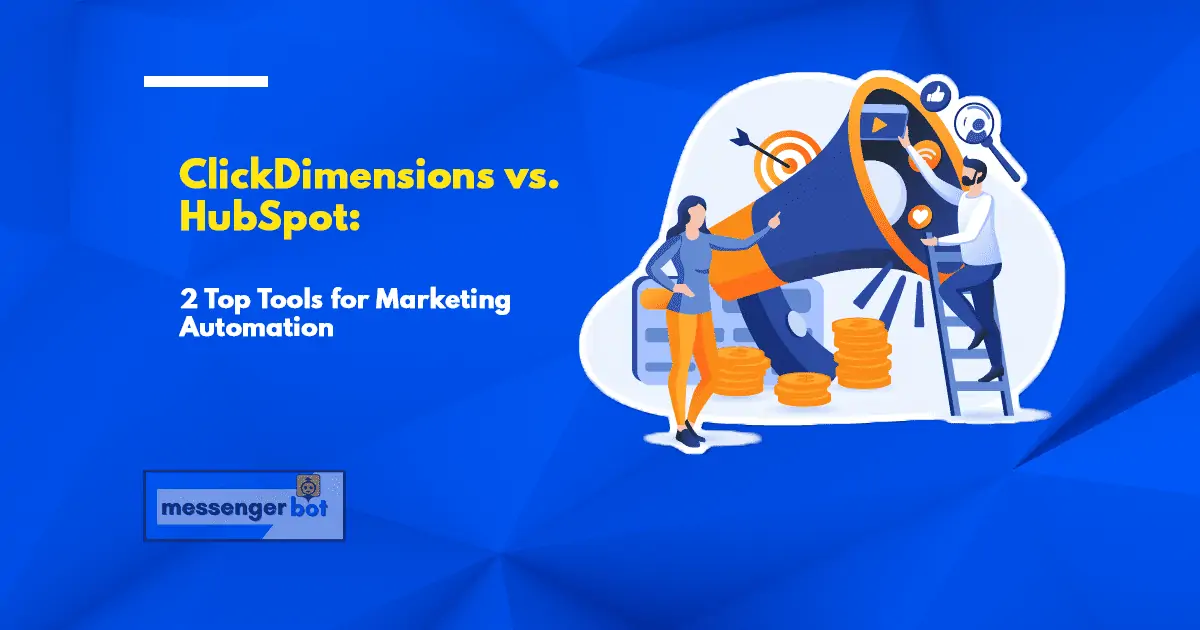Marketing automation is a powerful tool for any company, large or small. Marketing automation can be used to automate outbound marketing campaigns, personalize the customer experience and measure the ROI of various marketing efforts. There are many tools on the market that help you to manage all of this, but which one should you use? In this blog post, we will compare two top tools to find out!
HubSpot vs ClickDimensions Features Comparison
Hubspot and ClickDimensions are top tools that can help you automate your marketing process.
When it comes to features, both offer similar functionality for improving your marketing efforts by automating repetitive tasks like email campaigns or creating landing pages. However, there are some key differences that can be important when it comes to choosing a platform.

eCommerce
eCommerce is the process of buying and selling products or services over the internet. It has become a key part of marketing in recent years, as more and more people are shopping online. There are a number of reasons why eCommerce is important in marketing. It allows businesses to reach a wider audience than they would be able to through traditional methods like print and television ads.
Many people shop online because it is more convenient, giving businesses the opportunity to reach these customers (this will be discussed in further detail under “connecting with consumers”). eCommerce also provides an easy way for companies to build their brand through websites or social media pages. Promotions can easily be offered on various platforms allowing products to be easily marketed.
eCommerce has become an important part of marketing due to the rise in popularity that it has seen over recent years, as well as its ability to reach a wide range of people who are willing to buy products online. It is not niche anymore and businesses can no longer ignore this outlet for advertising their goods or services if they want to be successful.
Hubspot’s eCommerce is based on a pay-per-lead basis. They have been named as one of the Top 100 Brilliant Companies by Entrepreneur Magazine, and they offer some great tools for marketers to use when it comes to eCommerce.
First off, Hubspot has an excellent blog that is updated weekly with relevant industry information. Their blogs are quite extensive so you can really learn about all aspects of eCommerce and online marketing. They also have a great resource center where you can find templates, articles, webinars, and more to help you get started with your eCommerce campaigns.
Hubspot’s main strength is its ability to connect with consumers. Through their website builder and social media tools, businesses can create a website or social media page that reflects their brand. Hubspot also offers great tools for creating landing pages, which are important when you’re trying to convert leads into customers.
Overall, Hubspot is an excellent choice for businesses that want to focus on building relationships with consumers. They have a wide range of tools and resources available, as well as a team of experts who are always happy to help.
ClickDimension’s eCommerce is based on a pay-per-click basis. They are a Microsoft Gold Partner, and they offer some great tools for marketers to use when it comes to eCommerce.
ClickDimension’s main strength is its ability to connect with customers on common platforms like Facebook or Twitter. Customers who follow a company through these popular social media sites are more likely to make a purchase, and ClickDimension’s tools allow businesses to effectively market their eCommerce campaigns on these platforms.
Overall, ClickDimensions is an excellent choice for companies who want the ability to connect with customers through popular social media sites like Facebook or Twitter. They have a wide range of tools available that are designed specifically for these platforms, as well as a team of experts who are always happy to help.

Integrations
Integration is the process of linking two or more applications together. This can be done in a number of ways but is most commonly accomplished by passing data between the applications. When it comes to marketing automation, integrations are essential. By integrating your CRM and email marketing tool, for example, you can streamline your sales process by automatically adding leads to your CRM as they are added to your email list, and sending follow-up emails based on specific actions that a lead takes.
Integrations are also important for tracking your marketing efforts. By integrating your website analytics tool with your email marketing tool, for example, you can see how much traffic each of your emails is sending to your website, and which pages people are visiting on your site after clicking a link in one of your emails.
Hubspot’s integrations are some of the most comprehensive in the industry. The tool integrates with more than 150 applications, including Salesforce, Microsoft Dynamics CRM, Marketo, Pardot, and Eloqua. Hubspot also has its own built-in integrations for things like social media and website analytics.
Hubspot integrations are done by creating “app connections” within the tool. When you sign up for Hubspot, your integrations will be automatically set up for you with no additional work required on your end. You can then access all of these integrations from one place in order to manage them and monitor their performance.
ClickDimensions integrations are a little more limited than Hubspot’s, but they still offer a good range of options. The tool integrates with Salesforce, Microsoft Dynamics CRM, Marketo, Pardot, and Eloqua, as well as other applications like Google Analytics and Mixpanel.
Like Hubspot, ClickDimensions integrations are done by creating “app connections.” However, you need to set them up yourself. This can be a bit of a hassle, but it also gives you more control over your data and how it is used.
ClickDimensions also has its own built-in integrations for website analytics, social media management, and email marketing.
In terms of integrations, Hubspot and ClickDimensions are about equal. Hubspot has a few more options, but you can still integrate with most of the same applications using ClickDimensions. While integrations are important for marketing automation, it’s also good to have some built-in integrations that don’t require additional tools or work on your end.

Training and Resources
Training and resource materials are extremely important in marketing because it gives individuals the opportunity to learn and study different key point that will help them achieve their goals. When you take the time to research what resources are available, then your learning curve becomes shorter and more effective than if you were just guessing on how things work or should be done.
Training and resources can come in many different forms such as, online classes, eBooks, articles, videos, webinars, and more. The important part is that you take advantage of the resources that are available to you so that you can improve your skillset and knowledgebase.
Hubspot’s training and resources are extremely helpful and they offer a variety of different things to their users. They have webinars, eBooks, articles and courses for individuals who want to take the time out of learning on their own.
Their mission is “To make marketing easier than ever so small business owners can focus on what matters most: growing and running their businesses.” They truly believe in this mission and it shows through the quality of their resources.
Hubspot has both free and paid training materials. The great thing about the paid material is that it also comes with a guarantee, if you are not satisfied then Hubspot will give your money back. This shows just how confident they are in their products ability to get results for users.
Clickdimensions also offers a variety of training and resources for individuals who want to learn more about marketing automation. They have webinars, eBooks, articles, blog posts, videos, and templates available to their users.
The reason why Clickdimensions training and resources are so helpful is that they cover many different aspects of marketing automation such as, lead scoring, emailing/marketing automation best practices and much more. Their blog posts also come with infographics to help better explain certain topics which makes it easier for individuals to understand the information that is being presented to them.
ClickDimension’s training and resources are extremely helpful and they offer a variety of different things to their users. ClickDimension’s training and resources are extremely helpful because it covers everything from lead scoring, email automation best practices, blog post templates for social media marketing, webinars on business intelligence tools and much more!
Their blog posts also come with infographics to help better explain certain topics which makes it easier for individuals to understand the information that is being presented to them. ClickDimension’s mission statement really comes alive when you take a look at all of their different training and resource materials.
In terms of training and resources, Hubspot and ClickDimensions are both exceptional tools. They offer a variety of different resources that individuals can use to learn more about marketing automation. Hubspot’s training and resources are slightly more extensive, but ClickDimension’s resources are still very helpful.
Both companies have a mission statement that drives their company culture and this is evident in the quality of their training and resources. Hubspot’s mission is “To make marketing easier than ever so small business owners can focus on what matters most: growing and running their businesses.” While ClickDimension’s mission statement is, “to help marketers deliver exceptional customer experiences.”
In conclusion, both companies have a variety of different tools for users to use. The difference between the two is simply in what they offer to their clients. Hubspot’s training and resources are slightly more extensive, but ClickDimension still has a variety of helpful tools for users!

Analytics
Analytic tools allow you to measure the effectiveness of your marketing campaigns by tracking how many people visit your website, what they do when they get there, and how that activity converts into leads or customers. Without this data, it’s difficult to determine whether your efforts are effective and worth continuing.
Analytics tools provide two major pieces of data. The first is the who, which tells you what type of visitors are coming to your site and how they got there (e.g., paid ad or organic search).
The second part covers what happened after those users arrived at your website, providing insight into their behavior (e.g., viewed product pages, downloaded a white paper, or subscribed to your email list). Armed with this data, you can determine what marketing activities are driving the most success and double down on those.
Hubspot’s analytics tool provides detailed reports on website visitors, including where they come from, what pages they visit, and how long they stay on your site. It also tracks how many of those visitors convert into leads or customers.
Hubspot’s analytics tool is especially useful for measuring the effectiveness of marketing campaigns. You can see how individual campaigns are performing and determine which ones are worth continuing. You can also see which channels generate the most leads and customers so you can focus your efforts on those.
Hubspot’s analytics tool is integrated into all its other marketing tools. You don’t have to keep track of your data in multiple places, which saves time and makes it easier to get a complete picture of how well you’re doing.
ClickDimensions’ analytics tool goes beyond basic website visitor tracking to provide detailed reports on email opens, clicks, and conversions. It also tracks how many people visit your website after opening or clicking an email, and how many of those visitors convert into leads or customers.
ClickDimensions’ analytics tool is especially useful for measuring the effectiveness of email campaigns. You can see how individual campaigns are performing and determine which ones are worth continuing. You can also see which channels generate the most leads and customers so you can focus your efforts on those.
ClickDimensions’ analytics tool is integrated into all their other marketing tools. You don’t have to keep track of your data in multiple places, which saves time and makes it easier to get a complete picture of how well you’re doing.
In terms of analytics, Hubspot and ClickDimensions offer similar functionality. Both tools track website visitors, email opens, clicks, and conversions. Hubspot’s analytics tool is also integrated into their other marketing tools while ClickDimensions’ analytics tool can be used with any business platform you choose to use it on so the choice really comes down to your preference in that area or what other tools you are using in your marketing.
Overall, Hubspot and ClickDimensions are both great options for marketing automation and offer robust analytics features to help you measure the success of your campaigns. Whichever tool you choose, be sure to take advantage of its capabilities so you can improve your marketing results.

Email Marketing
Email marketing is a direct marketing method in which senders use electronic mail messages to market products or services. Email is an inexpensive way to reach people with messages about new product offerings, event updates, and much more.
Email marketing is one of the oldest and most effective digital marketing practices. Email is still a powerful way to connect with your customers, even as they increasingly communicate with businesses through social media channels.
Hubspot’s email marketing tool lets you create and send beautiful email newsletters, autoresponders, and triggered emails. You can also segment your lists to target specific customers and track the success of your campaigns with real-time analytics.
Hubspot’s email marketing tool also integrates with other Hubspot products, so you can create powerful automated marketing campaigns that convert leads into customers.
The email marketing feature of Hubspot is free for up to 500 contacts.
ClickDimensions offers you easy-to-use email marketing software that allows you to easily create, send and manage beautiful newsletters. It offers personalized messages through segmentation based on customer profile data, event triggers, or even actions taken in your application.
ClickDimensions’ Email Marketing tool also comes with built-in support for web push notifications so you can deliver rich content to your customers’ browsers.
ClickDimensions is free for use up to 50 subscribers.
In terms of email marketing, Hubspot and ClickDimensions offer similar capabilities with a few differences in pricing, features offered, and integrations.

Lead Management
Lead management is the process of tracking and managing leads through their lifecycle. This is important for a couple of reasons. First, you want to make sure that you are always following up with potential customers who have shown interest in your product or service. Second, you want to make sure that you are not wasting time and resources on leads that are never going to buy from you.
Lead management is a critical part of any effective marketing campaign. There are a number of different tools that you can use to manage your leads, but two of the most popular options are HubSpot and ClickDimensions.
Hubspot’s lead management starts with the lead capture form. This is a simple, customizable form that you can put on your website so people who are interested in learning more about what you have to offer can give their information and sign up for your newsletter or download an eBook. Hubspot then manages all of this data under its “Contacts” section where leads are stored until they are ready to be contacted.
Hubspot also provides lead scoring capabilities, which allow you to score your leads according to how interested they are in what you have to offer. This is important because it gives you the ability to prioritize who gets contacted first and helps make sure that marketing resources aren’t wasted on lower-priority leads.
ClickDimensions takes a slightly different approach to lead management. Rather than relying on forms to capture leads, it uses email tracking and marketing automation tools to automatically track leads who have engaged with your content in some way. This data is then stored in the “Leads” section of the tool, where you can easily keep track of who has shown interest in your product or service and follow up with them accordingly.
ClickDimensions also offers lead scoring capabilities, but they are a bit more limited than Hubspot’s. You can only score leads according to how often they open your emails or click on links in your emails. However, this is still a valuable tool for prioritizing leads and making sure that marketing resources aren’t wasted on people who are not interested in what you have to offer.
In terms of lead management, Hubspot and ClickDimensions are both very capable tools. Hubspot’s lead management is more comprehensive, offering features like lead capture forms and lead scoring capabilities. However, ClickDimensions’ email tracking and marketing automation tools make it a viable option for businesses that rely heavily on email marketing. Ultimately, the decision about which tool to use will depend on your specific needs.
CRM Integration
CRM integration is the process of linking your CRM system with your marketing automation tool. This allows you to track all of your leads and customers in one place, which makes it easier to measure the success of your marketing campaigns.
CRM integration is important because it allows you to track your leads and customers more accurately. This helps you to determine which marketing campaigns are most effective, and it allows you to optimize your campaigns based on real data.
Hubspot’s CRM integration allows you to export your data from Hubspot into a CSV file. You can then upload this CSV file directly into the CRM system of your choice, which will automatically sync all of your contacts and accounts so that they are available within both platforms.
Hubspot’s CRM integration is important because it allows you to sync your contacts and accounts with popular CRMs like Salesforce, ZohoCRM, NetSuite, SugarCRM, Pipedrive, Insightly, etc.
The CRM integration of Hubspot is also very user-friendly, which makes it easy for you to get started.
ClickDimensions’ CRM integration is a little different than Hubspot’s. Instead of exporting your data into a CSV file, ClickDimensions allows you to sync your contacts and accounts directly with your CRM system. This means that you can access all of your data within both platforms, and it eliminates the need to export or import any files.
ClickDimension’s CRM integration is important because it allows you to access your data in real-time. This means that all of the changes made within either platform will automatically sync with the other, which makes it easy for users to manage their accounts and contacts across both platforms.
ClickDimensions’ CRM integration also provides an API, so if you are a developer you can create custom integrations between ClickDimensions and your CRM system.
In terms of CRM integration, Hubspot and ClickDimensions both have their advantages. Hubspot’s CRM integration is very user-friendly, which makes it easy for new users to get started. However, if you need more advanced integrations with other CRMs like Salesforce, ZohoCRM, NetSuite, SugarCRM, Pipedrive, etc., ClickDimensions might be a better option for you.
ClickDimension also provides an API, which allows developers to create custom integrations between ClickDimensions and most CRM systems. This makes it easy for users who need more advanced integrations with other platforms like Salesforce, ZohoCRM, NetSuite, SugarCRM, etc.
If you are a developer, ClickDimensions might be the better option for your business since it provides an API and allows users to create custom integrations with the most popular CRM systems. Hubspot’s integration is also very user-friendly, which makes it easy for new users to get started. However, if you need more advanced integrations with other CRMs, ClickDimensions might be a better option for you.
In the end, both Hubspot and ClickDimensions are great options for marketing automation, and it really comes down to your specific needs and requirements. So, which tool is best for you? Only you can decide that.

On-Boarding
Onboarding is the process of getting a new customer up to speed on your product or service. It can be as simple as providing a tour of your product, or as complex as creating a training program that covers all aspects of how to use your product.
Onboarding is one of the most important parts of marketing because it’s how you ensure your customer is seeing the maximum value from your product.
Onboarding can also help reduce customer support costs, by teaching customers how to use your product effectively on their own.
Hubspot’s onboarding is one of the best in the industry. It starts with a welcome email, which is followed by an automated series of emails that are sent over the course of several days or weeks.
Each email provides relevant content for your role at your company and how Hubspot can help you accomplish those tasks more effectively.
After this initial onboarding sequence, Hubspot also offers a range of training and support options, including video tutorials, webinars, an extensive knowledge base, and live chat with support agents.
Hubspot has also developed a number of tools that can help you manage your onboarding process, including an Onboarding Scorecard which provides insight into how effective your current onboarding strategy is.
ClickDimension’s onboarding process is a bit more complex than Hubspot’s, but it’s also much more customizable.
ClickDimension starts with an on-Boarding questionnaire that helps you identify the areas where your new customer will need the most help.
Based on your responses, ClickDimension creates a custom on-Boarding program for your new customer, which can include video tutorials, step-by-step guides, and even phone support.
ClickDimension also offers a wide range of training and support options, including video tutorials, webinars, an extensive knowledge base, and live chat with support agents.
ClickDimensions also has a number of tools for managing your onboarding process, including an Onboarding Scorecard that helps you measure the effectiveness of your current strategy.
In terms of onboarding, Hubspot and ClickDimensions are both excellent options.
Hubspot’s onboarding is more automated, while ClickDimension’s is more customizable. However, both offer a wide range of training and support options, as well as tools for managing your onboarding process.
Which onboarding process is best for you will depend on your specific needs and preferences.

Pricing
Pricing is a critical factor in any decision-making process, and the same holds true for marketing automation. HubSpot and ClickDimensions both offer a wide range of pricing plans to fit businesses of all sizes.
Both platforms also have a free trial so you can try them out before making a commitment. However, there are some key differences between the two platforms so let’s dive in and take a look.
Pricing is defined as the process of establishing a price for goods or services, and it is one of the most important factors in marketing. The pricing strategy that you choose will affect how much revenue your business generates as well as its profit margin.
Hubspot’s pricing is based on the number of contacts you have in your database. The more contacts you have, the higher the price. There are also add-on features that you can purchase to enhance your marketing automation experience.
Hubspot’s price is $200 per month for every 1000 contacts in your database.
For example, if you have 5000 contacts in your database then Hubspot’s pricing would be $400 per month. There are also add-ons that can cost anywhere from $20 to $100 extra each month depending on the feature and its usage.
The pricing of Hubspot is based on contacts in your database.
ClickDimensions’ pricing is based on the number of users you have. The more users you have, the higher the price.
For example, if you have five users then ClickDimensions’ pricing would be $600 per month. There are also add-ons that can cost anywhere from $20 to $100 extra each month depending on the feature and its usage.
The pricing of ClickDimensions is based on users in your company.
In terms of pricing, Hubspot and ClickDimensions are very similar. However, Hubspot’s pricing is based on the number of contacts in your database while ClickDimensions’ pricing is based on the number of users in your company. So if you have a lot of contacts, Hubspot would be a better option, but if you have a lot of users, ClickDimensions would be a better option.
Customization
Customization is the ability to utilize marketing automation software in a way that meets your specific needs.
Your company’s goals are unique, so marketing automation is most effective when it can be customized for your business processes. Marketing technology solutions should also offer flexible customization options because there is no one-size-fits-all approach under this umbrella term and each business is different.
The ability to change how something works, or add new functionality, is key to making marketing automation work for you. If the software doesn’t offer what you need out of the box, then it can be difficult – and expensive – to make changes down the road.
Hubspot’s customization options include the ability to add or remove fields from forms, create custom workflows, add new pages or sections to your website, and more. You can also integrate Hubspot with other tools you’re already using in order to get the most out of your marketing automation.
Hubspot has a number of different integrations and offers the option to create individual APIs for other services you may be using. They offer templates for popular integration types, such as Google Analytics or social media tools like Facebook Custom Audiences and Twitter Tailored Audience.
Clickdimensions allows users to add or remove fields from forms, create custom workflows, add new pages or sections to your website, and more. Like Hubspot, they also offer integrations with other tools you may be using.
Clickdimensions offers a few different ways to integrate with other tools. You can use their built-in connectors, which include popular integrations like Salesforce and Microsoft Dynamics CRM. If you need to connect to a tool that doesn’t have a connector, you can use their Custom Connector feature. This allows you to build integration using the API of the service you’re working with.
In terms of customization, ClickDimensions and Hubspot are both strong options. Clickdimensions offers a few different ways to integrate with other tools, while Hubspot has several built-in integrations as well as the option for custom APIs. Both offer some level of customization that allows you to get the most out of your marketing automation tool.
Frequently Asked Questions
How well does a CRM Microsoft Dynamics-HubSpot integration work?
Microsoft Dynamics offers full support for HubSpot’s marketing automation.
The integration allows for data synchronization between the two tools and enables users to work with both platforms simultaneously.
This helps marketers accomplish their tasks quickly and efficiently.
Using the integration, you can create and publish a campaign in under 30 seconds. You can also manage your leads in Dynamics and see their contact information, activity history, and score. And you can create workflows to automate marketing tasks.
What are some alternatives?
Some alternatives to HubSpot and ClickDimensions are Salesforce Marketing Cloud, Pardot, and Act-On. All of these platforms have their own strengths and weaknesses, so it’s important to do your research before selecting a platform. Make sure to consider the size of your company, your budget, and your team’s skillset when making a decision.
Salesforce Marketing Cloud is a great option for larger businesses. It has robust features and a large user base, which can be helpful for companies that need support with scaling their marketing efforts. However, it can be expensive and may be overkill for smaller businesses.
Pardot is a good choice for companies that are looking to automate their lead generation process. It has a robust feature set and is relatively affordable. However, it can be difficult to use if you’re not familiar with Salesforce products.
Act-On is a good option for businesses that are just starting out with marketing automation. It’s affordable and easy to use, making it a great choice for small businesses or newer marketers. However, it does lack some of the more advanced features that other platforms offer.
Which the HubSpot integration may not provide so well?
Hubspot integration may not provide some of the more powerful marketing automation features that ClickDimensions offers, such as lead scoring and dynamic content. Additionally, HubSpot’s reporting capabilities are not as robust as ClickDimensions’. If you need a tool that can help you score leads, target content to specific contacts, or create detailed reports on your marketing efforts, then ClickDimensions is a better option.
However, HubSpot does have some advantages over ClickDimensions. First, it is less expensive, and its user interface is simpler to learn. Additionally, HubSpot integrates with many popular tools like Salesforce and Google Analytics, which ClickDimensions does not. If you are looking for a comprehensive marketing automation tool that is relatively easy to learn and use, then HubSpot may be the better option for you.
Clickdimensions integration works with many popular tools like Salesforce and Google Analytics while HubSpot does not offer this kind of integration which makes it a little difficult when trying to integrate other applications into its system.
What are customers saying?
HubSpot Marketing is a popular marketing automation tool that many businesses use to increase their productivity and ROI. However, there are other options on the market, like ClickDimensions. So what are customers saying about HubSpot Marketing vs ClickDimensions?
Well, according to reviews online, HubSpot Marketing is generally seen as being better for marketing teams that have a lot of leads. It is also seen as better for businesses who want to be able to measure the ROI of their campaigns.
On the other hand, ClickDimensions customers like its reporting features and say it’s easy enough to use even if you don’t know much about automation software. They also said they like that it’s easy to integrate ClickDimensions into their existing marketing stack.
Which is better: ClickDimensions vs HubSpot for Microsoft Dynamics CRM?
In terms of Microsoft Dynamics CRM, ClickDimensions has a more favorable review.
Clickdimensions integrates very well into Microsoft Dynamics CRM, making it easier for marketers using the platform to create marketing campaigns and track their results. One of ClickDimension’s biggest advantages is its ability to build custom workflows based on customer behavior, which is something HubSpot does not currently offer.
HubSpot, on the other hand, offers very thorough analytics tools through their in-platform reporting system. The platform also offers detailed lead generation reports and sales forecasting capabilities to help marketers better manage campaigns throughout each stage of the funnel. Hubspot is most popular among larger organizations because of its large library of integrations and features.
In the end, it really depends on what your team needs in terms of marketing automation. If you are looking for more robust analytics and reporting tools, HubSpot is likely a better option. If you are looking for more workflow customization options based on customer behavior, ClickDimensions is the better choice.
The best option for your team will likely be somewhere in between these two platforms, so you’ll have to weigh out all of your options before making a final decision!

Conclusion
Both HubSpot and ClickDimensions are great tools for marketing automation, but which one is the best for your business?
HubSpot is a comprehensive marketing automation tool that offers everything from email marketing to lead management to CRM. It’s great for new and growing businesses that want a solution to help them connect with their customers on multiple channels.
ClickDimensions is an all-inclusive marketing automation platform built especially for marketers who demand power, flexibility, and ease of use in equal measure. Its highly intuitive interface makes it easy to create sophisticated campaigns quickly while the ability to integrate third-party apps and APIs gives marketers the power they need to do more.




